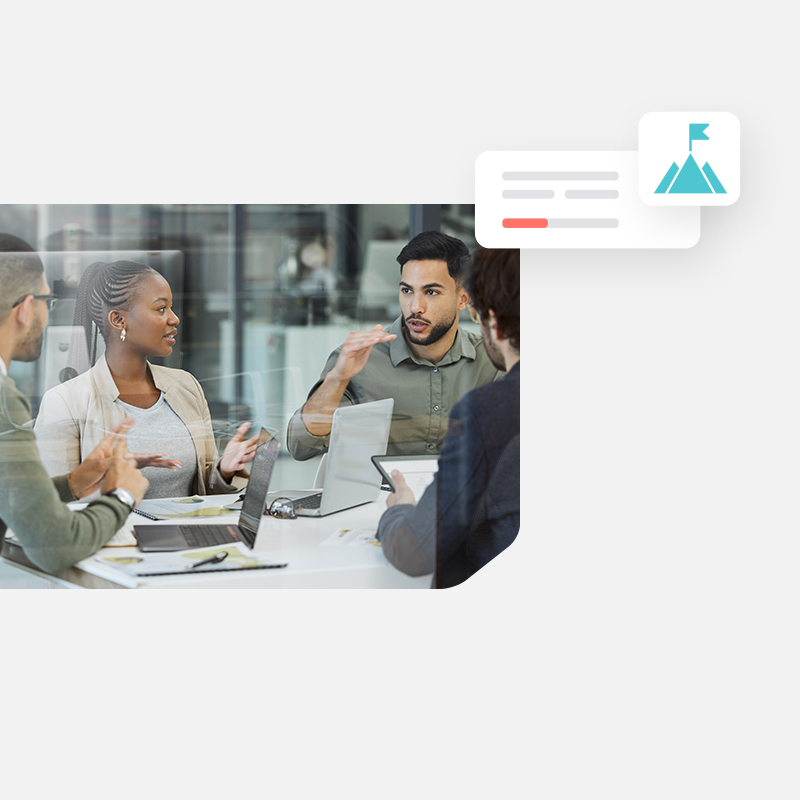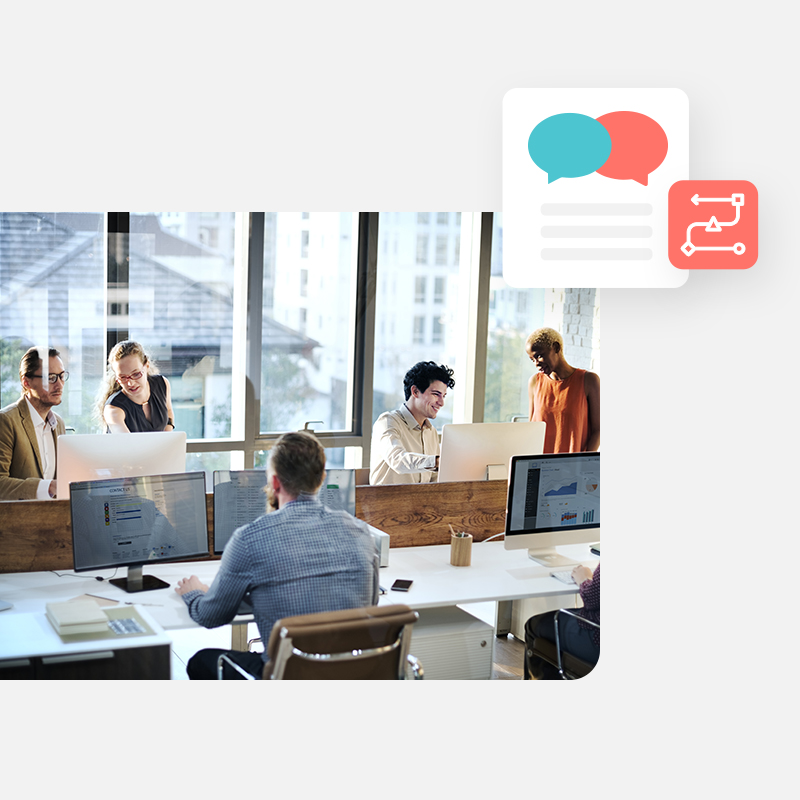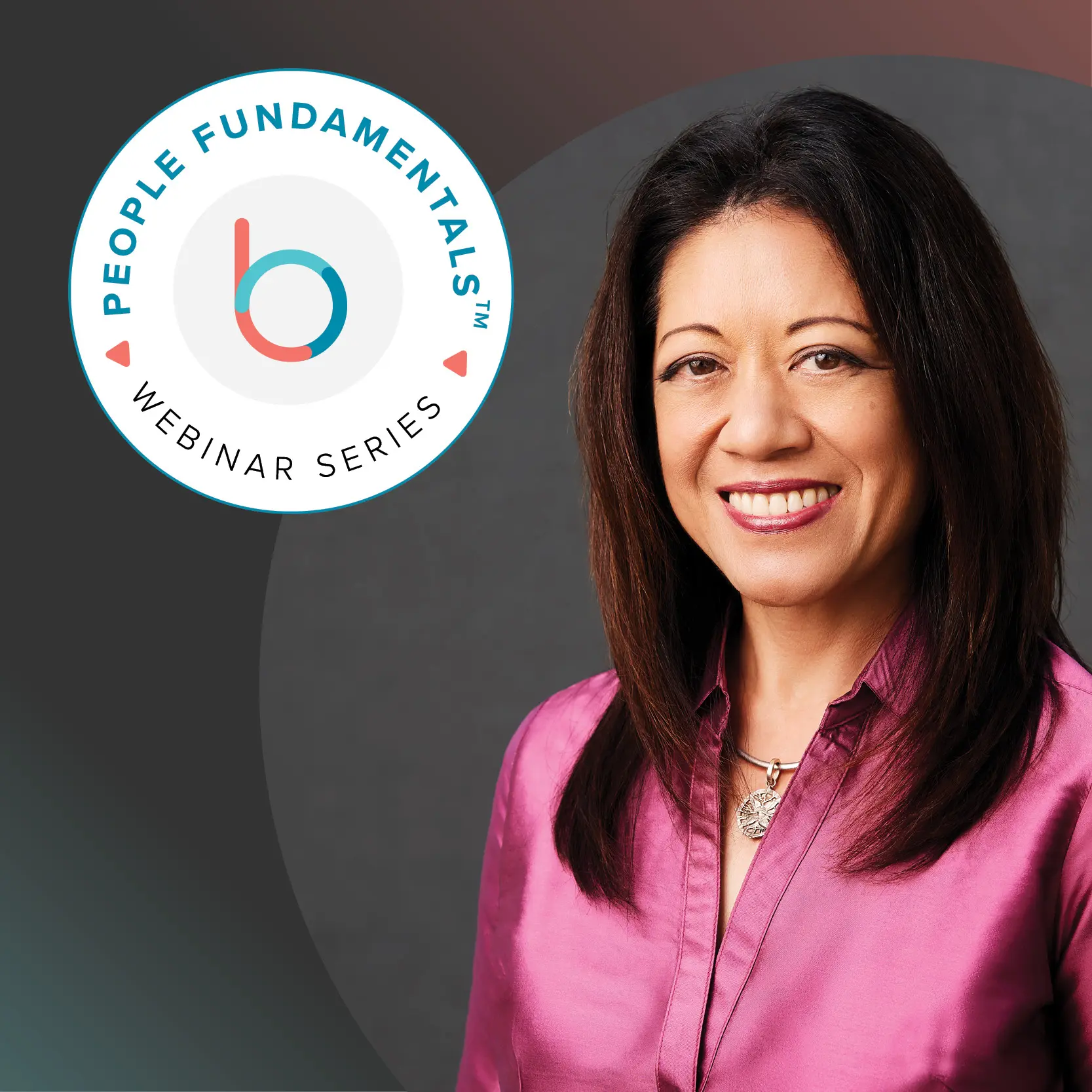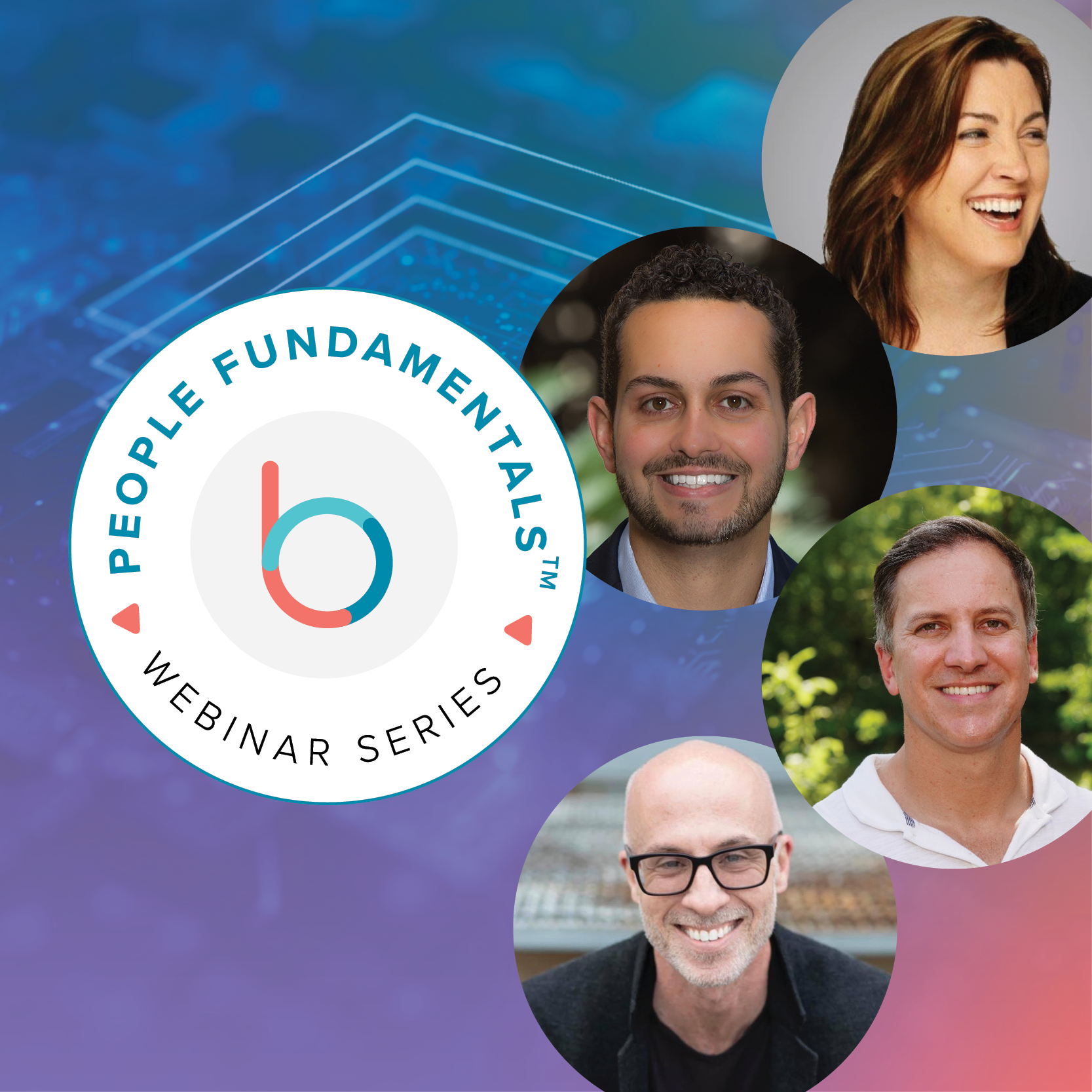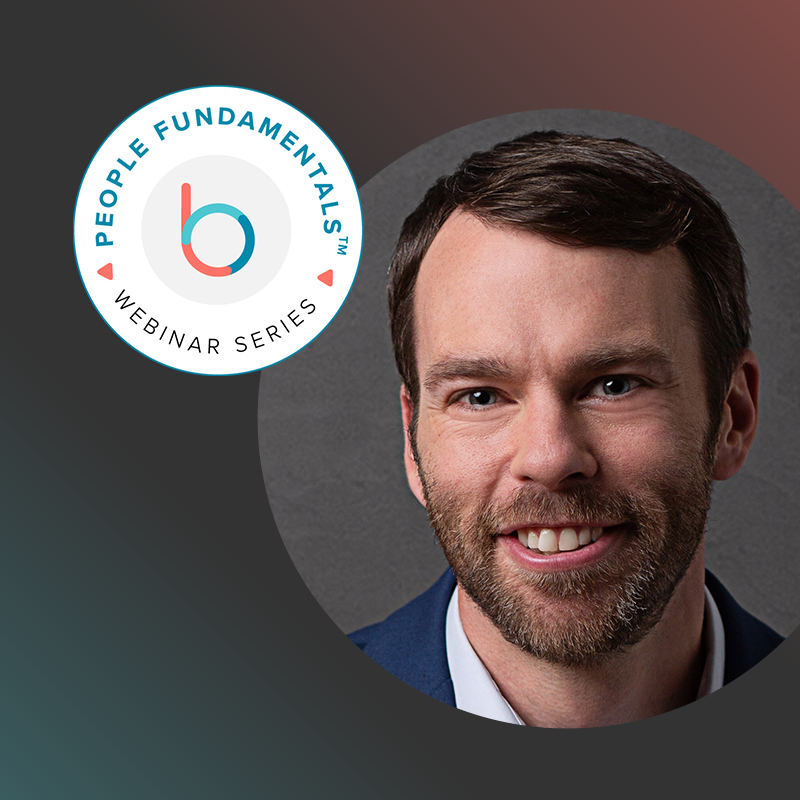As market demands evolve, the gap between the skills you need and the skills you already have in your workforce will continue to grow. The solution? Expand your current workforce’s capabilities to meet these changing needs by incorporating employee development plans into your talent strategy.
Consider these employee development ideas to drive your business forward.
How Are Employee Development Practices Strategic?
The role of learning and development has never been more vital to business success. A culture of continuous learning and upskilling supports your employees’ needs and creates tremendous business value. By investing in your employees’ professional development, you can increase the value of your workforce — and the value the workforce provides to the business.
You’ll want to build processes for employee development into existing people processes. The more impact you can create with less work, the greater the payoff to the business. Incorporating learning and development into existing processes also minimizes disruption to employees, increasing their likelihood of adopting employee development plans.
Why Is Employee Development Important?
The pace of change isn’t slowing, and the labor market remains tight. You can’t afford to rely on external talent to fill skills gaps created by this continuous disruption. Upskilling the workforce internally to meet your changing needs is a more sustainable talent strategy and one that produces several collateral benefits.
Here are five positive changes that investing in employee development can drive in your business.
Employee Retention Goes Up
The Great Resignation has made it an imperative to proactively engage and retain your workforce. Aligning employees with company goals and showing them options for mobility can build stronger bonds between employees and the business.
By strengthening this connection through learning, you can provide context and meaning for every individual’s daily work, no matter where they’re slotted on the organizational chart.
Seeing pathways for growth within that context gives employees something to work toward and helps them feel more engaged with the work itself. And the more engaged employees are, the more likely they are to stay — and thrive — in your company.
Workplace Productivity Increases
Employee development supports greater workforce productivity. Employee development helps people become better at their jobs, enabling them to perform tasks more efficiently and effectively.
Beyond improved performance, employees will appreciate opportunities to build learning and development into the flow of work. This learning model is more engaging, which drives productivity up.
Job Pathways Become Clearer
Mapping out employee training and development opportunities prompts your HR team and managers to be more intentional about career development.
Look for ways to be deliberate and strategic as you design learning pathways alongside career pathways. Aligning learning with opportunities for advancement gives employees clarity and a more compelling reason to pursue training and development.
Business Profitability Improves
A robust employee development program supports higher business profitability. Building capabilities internally can trim your talent acquisition costs and optimize the value of your existing workforce.
Additionally, when employees are more engaged and productive, business revenue is likely to increase, driving profitability. And the better employees become at their jobs, the lower your overall labor costs, which also adds to your bottom line.
Workforce Capabilities Grow
One of the most significant benefits of employee development is expanding workforce capabilities. That gives you opportunities to fill skills gaps internally so you don’t have to rely on an uncertain external labor market to meet your talent needs.
You can better prepare your business to meet growing market demands and future needs when you can count on internal talent.
3 Types of Employee Development Plans
Employee development plans are customizable for each employee’s unique needs. Here are some types of development plans to consider at your business.
Professional Development Plans
A professional development plan is a comprehensive growth program designed for an individual employee to achieve their larger goals, which may — or may not — be something they can do at their current company. An accountant at your firm may hope to one day follow their passion and pursue a career in teaching, for example.
While it may seem counterintuitive to help an employee prepare for a career that takes them away from your business, finding ways to support their journey will optimize their engagement and contributions to your business.
A professional development plan outlines the employee’s long-term learning and career goals while encompassing personal goals that affect their ability to grow into their careers. An accountant hoping to pursue a teaching career, for example, may need to improve their communication, teamwork, or social skills — learning opportunities you can provide them in their current role.
Career Development Plans
Career development plans are more targeted than professional development plans. They address the skills and competencies employees need to bring their career goals to life. They have four primary components: Where the employee is now, where they want to go, areas of improvement, and the plan for improving.
Managers, acting as coaches, can help employees identify these elements. If the employee’s career goals align with roles in the organization, the people in those roles can serve as a valuable resource for mentoring aspiring talent.
Employee Training and Development Programs
Skill-based training and development plans are the most targeted type of employee development plans. Skill development plans set short-term goals for improving immediate performance in the employee’s current role.
Skill development plans are closer to training programs, which are targeted learning programs designed to fill operational skills gaps. Typically, the primary goal of these programs is to get employees to a baseline competence for their role.
Training and development plans are especially valuable for career mobility. To remain agile in the face of change, you need to be able to move employees within the company to fill shifting needs. Being able to quickly upskill an employee into an adjacent role provides tremendous value to the business.
Who Is Responsible for Leading Employee Training and Development?
The success of an employee training and development program depends on several factors. Here are some of the environmental elements of an effective development program, as well as who’s responsible for making them happen.
Learning Is Everyone’s Responsibility
Culture is one of the best tools for leading employee training and development. Culture is how work happens between people, and it’s everyone’s responsibility to uphold and put into practice. Recently, we’ve been able to be more intentional about how we design culture specifically around values and the behaviors that drive those values.
What are the behaviors, processes, and practices that can support what you believe to be most important? To build a learning culture, for example, consider these questions:
- What does it look like when we’re always learning?
- What are the behaviors to reinforce?
- How can we incorporate those into people processes?
While culture is created by everyone, the tone should be set at the top. The way you frame development programs to employees can grant them permission to spend time learning.
HR Sets Learning Priorities
When it comes to identifying specific gaps in skills and organizational capabilities, HR has to take the lead. There’s a lot of focus right now, for example, on “power skills” like leadership, coaching, strategic thinking, and change agility.
HR has to communicate learning priorities to managers, who can cascade them down to their reports. Goal alignment software can help by clarifying what needs to get done and empowering employees to act accordingly. It’s really important to be clear about the opportunities employees have for developing at the company and what that means for their future with you.
Managers Reinforce Training and Development
Over the past few years, the management role has evolved to provide more coaching and advising.
Managers can help give employees the ability to grow and develop skills in daily work. On-the-job learning is the best lab you can provide, and managers are instrumental in finding those opportunities for their reports.
How do we embed learning into the flow of work rather than making it another task to complete? One answer is to tie it to your business objectives and key results (OKRs). Learning should be elevated to the same priority level as other projects. If possible, help employees apply their learning in a targeted way while accomplishing their organizational goals.
Employees Take Responsibility for Their Own Goals
Employees share responsibility for learning and development, too. It’s important for employees to express their learning interests and where they’d like to move within the organization. Effective learning goals are born from performance and development conversations between employees and managers.
How to Create an Employee Development Plan
Employee development plans, like individual employee goals, start at the top and gain momentum as they move down the org chart to land with each employee. Here’s how to create effective employee development plans to drive learning and skill development in the right direction.
Establish Business Goals
Employee development plans always start with the big-picture business goals. Review the business strategy and your plan for executing it. Identify the specific actions and tasks that the workforce needs to complete to achieve business goals.
Your findings from this process will become the blueprint for your employee development plan.
Assess Work Development Needs
Given what the business wants to accomplish, assess your current workforce capabilities. Do you have the skills and competencies you need in your existing workforce? Identify points where you need to build new capabilities to drive business results. What specific skills does the workforce need to accomplish business goals?
Work with talent acquisition and workforce planning professionals to determine which of those skills, abilities, and competencies to build in house and which you need to source through external talent marketplaces.
Identify Career and Growth Opportunities
Using workforce development needs as a guide, identify specific career development and growth opportunities for individual employees. Employees with adjacent skills to those you need, for example, are prime candidates for upskilling to fill gaps. Link upskilling opportunities to distinct career development tracks to show employees what they’re working toward.
Take the employees’ interests and personal goals into account when identifying growth opportunities. Employees and the business need to be working toward shared goals. If employees aren’t personally invested in what they’re learning, they’re less likely to absorb the skills and knowledge they need.
Consider All Training and Development Formats
There are several learning formats employees can use to learn and grow their skills.
Traditional classroom learning involves one teacher and numerous students. In this model, students can collaborate with each other to enhance their learning. Online learning modules mimic classroom learning but in an individual, asynchronous format. Employees can engage in these modules on their own schedules.
Blended learning combines traditional, live learning with asynchronous online formats. Microlearning is an updated version of online learning. It consists of short one-off or continuous learning modules that employees can fit into their schedules more easily.
The most effective learning format is learning on the job. Building development into the flow of work gives employees the opportunity to practice and apply skills in the course of their daily tasks. You can blend on-the-job learning with any of the other learning formats to drive home learning outcomes.
The ideal format to use in an employee development plan depends on the individual employee and your company resources. Build a customized employee development program to produce the best learning outcomes.
Create a Clear Action Plan
With clear goals and a learning format in place, develop an action plan to help employees achieve their learning goals.
Managers and employees can collaborate to identify specific projects and tasks they can complete to apply their knowledge. Exercising new skills and abilities as they’re learned improves outcomes. Managers play an important role in emphasizing the connection between the employee’s learning goals and the business strategy.
Track Plan Effectiveness
As employees begin implementing their learning plan, have managers track their progress and check in frequently. Because employee learning goals are aligned with their organizational goals, assessing the learning plan’s effectiveness should be part of regular employee performance conversations. Managers can offer constructive criticism and positive feedback to help employees continue moving forward.
If the learning plan isn’t producing the desired results, you may need to revise it.
Revisit and Revise Your Plan as Needed
Make small changes to the employee’s development plan to see whether they produce better results. Consider changing the learning format, for example, to accommodate a particular employee’s learning style.
You may need to revisit your business plan on a larger scale, too. We can’t afford to just look at strategies and objectives only once a year. Part of embracing and adopting agility is learning to let go of goals that no longer serve the business and to reprioritize objectives according to changing circumstances.
Sometimes you have to stop doing certain things so you can focus on what matters most. However, this can have a ripple effect on employee development plans. Put contingency plans into place to help employees become more agile in their learning.
3 Employee Development Plan Examples
Here are some key areas of development for employees, along with employee development plan examples you can apply in your organization.
Subject Matter Expertise to Support Career Goals
An employee whose personal goal is to become an HR professional may need to enhance subject matter knowledge (and the ability to apply that knowledge) before stepping into an HR role.
The most effective template for this employee development plan is an OKR model. The objective for this employee is to move into an HR role. Key results indicating progress toward this goal may include getting an HR certification (demonstrating mastery over basic HR concepts) or serving in a temporary HR position (demonstrating the ability to apply HR concepts).
Using an OKR model, managers can collaborate with employees to help them find opportunities or resources to further their progress toward their goals. Ideally, the employee’s personal OKRs will align with their business goals, effectively driving both organizational and individual growth.
Leadership Development
A manager wanting to move up into senior leadership will need to develop their leadership skills. This employee probably already has some leadership skills from managing employees.
An employee development plan for this scenario will begin by assessing the skills the employee already has and defining the gaps they need to fill to move forward. Their supervisor can help identify opportunities to exercise the leadership skills they need within the course of their work.
This plan supports better management in the short term and more prepared candidates for senior leadership in the long term.
Time Management and Attention to Detail
An employee in a customer service role may need to learn to manage their time more effectively and pay more attention to the details of their work.
An employee development plan for this employee would focus on the specific skills they have to master to improve their performance. Modules may be helpful for understanding the concepts behind the skills, but their learning plan also should include opportunities for the employee to practice applying these concepts on the job.
Establish clear metrics for assessing progress, which in this case may include decreased time to resolution for customer service calls or better feedback from clients and customers.
Support the Workforce and the Business Through Employee Development Plans
Your goal as an advocate for the workforce is to give people opportunities to grow within the company. Your goal as an HR business partner is to expand organizational capabilities and skills. An effective employee training and development program contributes to both of these outcomes.
Implement an employee development plan to close the loop on people, strategy, and results.
Learn How to Build Professional Development in a Flexible Workplace.

